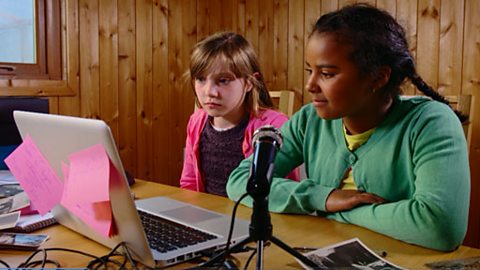Narrator: In Bristol, our film crew are learning more about World War II veteran Fergus Anckorn.
We'll find out what happens next after we've had a look at our top tip number six.
Speaker 2: Top tip number six: Be a super interviewer.
Narrator: Our interviewer Maya is about to ask Fergus the next question. Let's see how she does it.
Maya: Fergus, I know that you were taken prisoner by the Japanese.
What was the worst thing about being a prisoner?
Fergus: Well, when we were first taken prisoner there was no food.
There was no food to be eaten by anybody. It had all gone.
And during that time, six weeks without food, I ate grass, weeds, cockroaches, scorpions, mice, rats, cats, dogs, snakes.
Anything that moved I would eat. And if we couldn't do that we wouldn't live.
Narrator: Can you see that while Fergus is answering Maya's question she's keeping really good eye contact with him and repeatedly nodding her head?
Showing your interviewee that you are interested in what they're saying encourages them to tell you more and is the sign of a good interviewer.
Good interviewers also listen carefully and ask follow-up questions. Questions like, "How did you feel about that?"
Let's see how Maya responds to Fergus answer about having little food.
Maya: So how did you get through it?
Fergus: Just by going through day by day. Don't think of yesterday, it's past, it's history, nothing can change it.
Don't think of tomorrow, you might not be alive tomorrow.
When you wake up and you find you are alive, get through that day. I hope at the end of today I'm still alive. Just get through today. And I did that for four years.
Maya: Wow.
Narrator: Maya's simple follow-up question led to a really good answer from Fergus. So just like Maya, always remember to be enthusiastic, listen carefully, and ask follow-up questions when you can.
Let's take a look at some more examples of excellent interviewing by Britain's school children.
Child interviewer: How did war affect you and your family?
Interviewee: Well, my father being a school teacher of a certain age, he wasn't allowed to volunteer for the army.
So he had to stay and teach. Um, he became, er, a first-aid volunteer.
So, when the air raids came at night, he used to put his tin hat on and walk around.
Um, and the planes were flying above. Er, we were sitting under the dining-room table.
Child Interviewer: And when the aeroplanes were close to the city were you scared?
Interviewee: We didn't seem to be, no. You just kind of went on.
Went home. Hmm. That was it.
SHE CHUCKLES
We took it very casually.
Ch-, you know, young people did.
Mr Hutchinson: My name's Mr Hutchinson and I'm a teacher at Wilbraham Primary School.
Child interviewer: Do you know anything about your grandad?
Mr Hutchinson: Yes, er, I know that I-, obviously I knew my grandad, and my grandad was a soldier in the First World War.
Child interviewer: How old was your grandad when he started the war?
Mr Hutchinson: Well, when he started the war he was supposed to be seventeen, you were supposed to be seventeen to join the army, but he lied about his age. He was only sixteen when he joined the army.
Child interviewer: How do you think he felt?
Mr Huthinson: I loved talking to my grandad, and I used to look at his medals and things when I was growing up and used to talk to him, but he refused to talk about what he did in the First World War cause I think he was probably so upset by some of the things he'd seen he just didn't want to remember.
We're back again with the young film crew, who are interviewing World War Two veteran, Fergus Anckorn.
The crews interviewer is Maya and, with the advice of 91Čȱ¬ producer, Steve Humphries, she demonstrates some of the key techniques to employ when conducting an interview.
These include: being polite, making eye contact, looking interested, listening and asking follow up questions. The importance of asking follow-up questions and how these can be used to get the interviewee to open up and give the best possible answer, is also demonstrated.
In this section of the interview, Fergus talks about his experiences of starvation in Singapore during World War Two and the things he had to eat and do to survive.
We then see two clips that demonstrate excellent interviewing by other school children, as part of the 91Čȱ¬'s Make Film - Greatest Generation project.
Teacher Notes
Students could look at follow up questions and how they can illicit more information from an interviewee.
The class could discuss air raids and you could play sounds of a raid, before they consider what questions could they ask someone caught up in it?
Curriculum Notes
This clip will be relevant for teaching Media Studies and History at Key Stage 2 in England, Wales and Northern Ireland and at Second Level in Scotland.
More from the series Filming our Greatest Generation
Finding the right interviewee. video
A group of children look at how to find interesting characters to interview for an World War Two history project.

Using archive footage or photographs. video
A group of children look at ways of illustrating their story using archive footage and photographs for a World War Two history project.
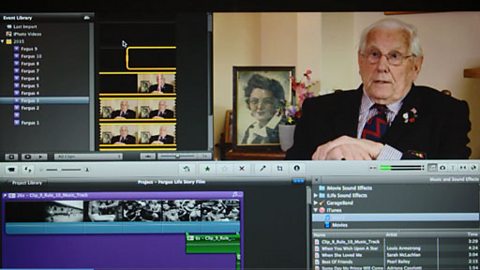
Good interview questions. video
A group of children explore the best ways to prepare interview questions for a World War Two history film project.
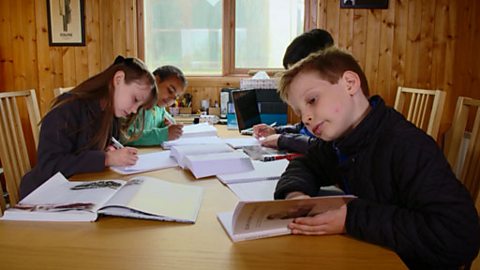
Choosing a good interview location. video
Under the guidance of 91Čȱ¬ producer, Steve Humphries, the children demonstrate why a good location is essential when interviewing for film.
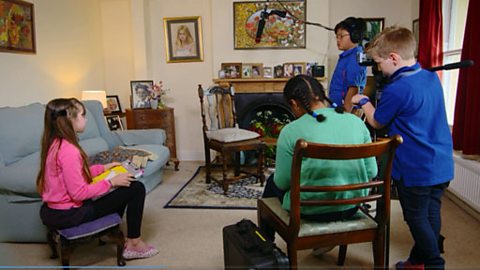
Setting up film shots. video
A group of children look at different ways to set up and frame shots when filming an interview for a World War Two history project.

Recording sound for an interview. video
A group of children look at how to set up clear sound recording when filming an interview for a World War Two history project.
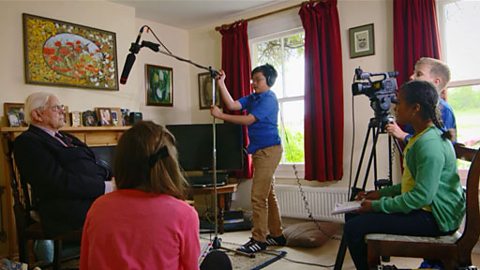
How to edit your interview. video
A group of children look at editing techniques for a World War Two history project.
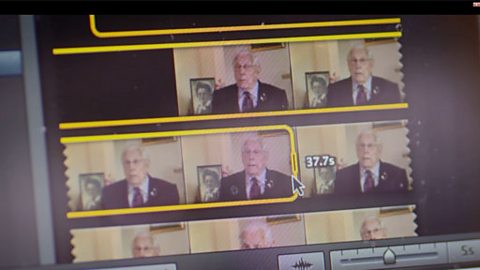
Using music in a film project. video
A group of children look at how adding music can enhance their World War Two history project.
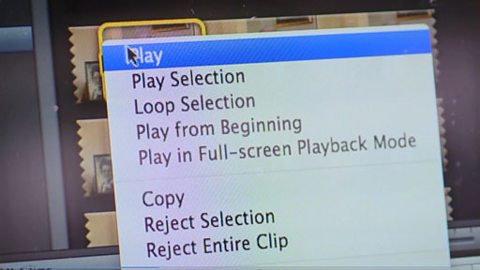
Adding voiceover to a film project. video
A group of children demonstrate how to use voiceover to enhance their World War Two history project.
